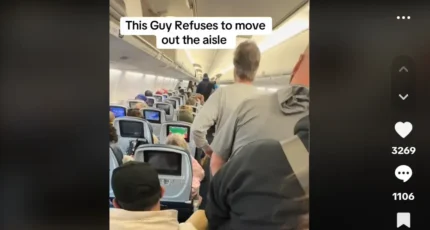We know there is a problem. Although the Trump administration has yet to file the paperwork to officially declare the country’s deadly opioid epidemic a national emergency, statistics from the recent preliminary report of the President’s Commission on Combating Drug Addiction and the Opioid Crisis state the case. Referring to the epidemic as “unparalleled,” the report pulled from Centers for Disease Control and Prevention data to reveal, “In 2015, nearly two thirds of drug overdoses were linked to opioids like Percocet, OxyContin, heroin, and fentanyl. This is an epidemic that all Americans face because here is the grim reality: Americans consume more opioids than any other country in the world. In fact, in 2015, the amount of opioids prescribed in the U.S. was enough for every American to be medicated around the clock for three weeks.”
We know the problem is growing. The President’s Commission further established that the number of opioid overdoses in the nation quadrupled since 1999 and, within that same period, the associated amount of prescription opioids in America quadrupled as well. “This massive increase in prescribing has occurred despite the fact that there has not been an overall change in the amount of pain Americans have reported in that time period,” reads the report. “We have an enormous problem that is often not beginning on street corners; it is starting in doctor’s offices and hospitals in every state in our nation.”
What many of us don’t know is that there is a sharply increasing impact of opioids on two communities in particular, college students and African-Americans. Be it a mostly African-American community in Ohio, or a predominantly white university in Georgia, the epidemic is making its mark as usage continues to grow among both groups.
“At Kennesaw, what we have seen is the increase of students in recovery specifically from the opiate epidemic,” said Teresa Wren Johnston, the founding director of Kennesaw State University’s Center for Young Adult Addiction and Recovery in Kennesaw, Georgia. A licensed professional counselor, Johnston lectures nationally on young adult addiction and collegiate recovery initiatives. “Right now about 68 percent of our students in recovery are actually recovering from some sort of opiate dependence,” said Johnston, noting that just four years ago the student population was more “typically dependent on or in recovery for alcohol or cannabis.” The center currently serves a specific cohort of about 70 students each year who, as recovering addicts, enroll to participate. Addiction also breeds crime, as people struggle to obtain needed drugs. In 2017, there have been 50 cases of drug crimes at the University of Georgia and over 20 cases at Kennesaw State.
Beyond the borders of our nation’s universities, in major urban centers, the opiate crisis is becoming increasingly diverse. In Ohio’s Cuyahoga County, which surrounds Cleveland, 58 of 399 fatal fentanyl overdoses were African-Americans, and the medical examiner’s office reports a 900 percent increase in fentanyl-related deaths among Black drug users from 2014 to 2016. “The covert introduction of fentanyl into the cocaine supply has caused a rapid rise in fatalities, and in 2017, the rate of African American fentanyl-related deaths has doubled from 2016,” testified county medical examiner Thomas Gilson at a Senate hearing in May. Gilson pointed out drug dealers were likely lacing cocaine with opioids to attract and hook new clients, and that African-Americans are more likely to use forms of cocaine than heroin. The fentanyl-cocaine mix strengthens the impact of the product leading to higher sales and increased fatalities.
In Philadelphia, fentanyl was responsible for more than 400 overdose deaths in 2016, according to Pennsylvania law enforcement officials. That number was up from nine in 2012. Similar increases have been reported in Chicago and other urban centers.
Measures to address the crisis have been mixed. At the national level, the Trump administration has yet to officially declare the opioid crisis a national emergency, a move that would further empower states with timely federal support for additional funding, mobilizing appropriate personnel, and fast-tracking the removal of bureaucratic obstacles to such life-saving protocols as naloxone, a drug that can reverse opioid overdoses. Numerous states are mobilizing their own resources and not waiting for the feds to act. Some have even declared opioid-related state of emergencies, including Alaska, Arizona, Florida, Virginia, Maryland, and Massachusetts.
At the collegiate level, schools have access to naloxone overdose kits — in February, the University System of Georgia prioritized the acquisition of naloxone for all college campuses in the state — along with other localized campus treatment programs. “Our center provides clinical support for people looking for recovery and for dealing with substance abuse disorders,” Kennesaw State’s Johnston said. “We specifically support students who are sustaining their recovery from dependence, so students who have six months of sustained recovery, who are coming back to college, participate in our program.” These students, Johnston explained, “have access to scholarship, have access to the community space, and to each other because we know that peer support is very important to people who are in recovery.”
Still, a major problem for schools like Kennesaw State and communities across the nation is the easy accessibility to opiates through their rampant over-prescription by unscrupulous doctors. The most frequent path to opioid addiction runs through the doctor’s office, where patients get hooked on prescription painkillers. These in-office addicts will move to buy drugs on the street market if or when the prescription pills become too costly or inaccessible. At the beginning of August, Attorney General Jeff Sessions announced the institution of an opioid fraud and abuse detection unit to go after doctors and pharmacies who commit such prescription-related fraud.
While Johnston feels some of the current measures being taken to combat the opioid crisis are helpful — including medically-assisted therapies and healthy, supervised detoxification processes — she believes a larger issue is being missed, one that goes beyond any individual drug or crisis. “We have to consider that addiction and dependence is addiction and dependence and it’s not always the individual drug that’s the problem, it’s the way that people become dependent,” Johnston said, noting the important step is to figure out “how we can prevent such dependence as we continue to work through this epidemic.
“I just think the opioid epidemic has called the nation’s attention to something that has existed in the past in many places because of the overdoses and the high propensity to die from using these substances,” Johnston said. “But we have to look at that broader definition of dependence and addiction in the substances, and not just focus on the substances they become dependent on.”


